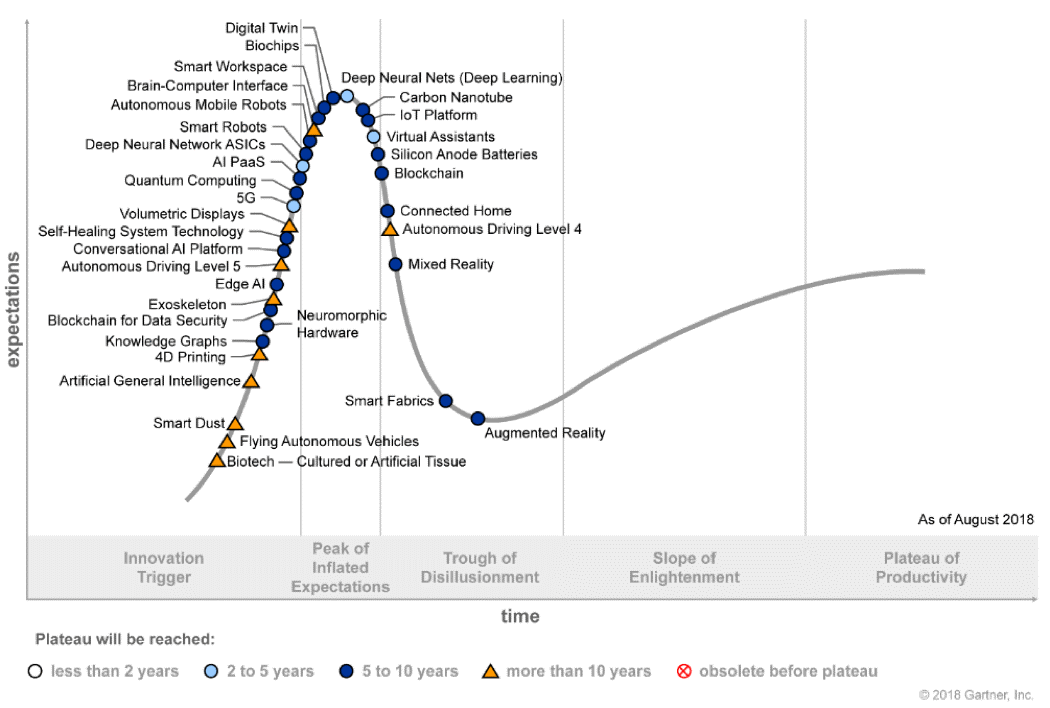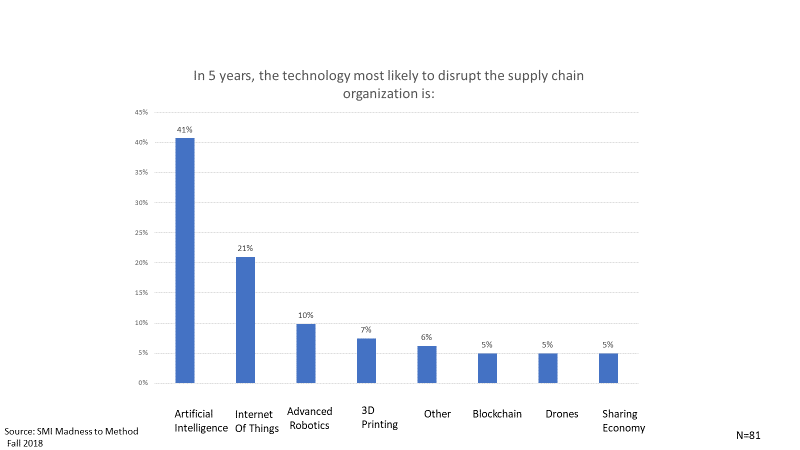|
|
Smart Dust and Other Fun Future Tech on the WayOne of my favorite reports from Gartner Research is the annual Hype Cycle for Emerging Technologies. For those unfamiliar, the Hype Cycle is a simple, intuitive way to evaluate the status of any trend. Think of Ed Sheeran. For years, Ed's pop cultural relevance and buzz has been on an entirely upward trajectory, so much so that it apparently became necessary for him to record a song with Andrea Bocelli. At this point, he most likely has reached his peak, and using the Gartner model, begun his slide into the trough of disillusionment. Eventually, Ed will figure things out and begin his ascendance to enlightenment and maturity as an artist. Technology follows a similar trajectory—Blockchain anyone?—which is why the Emerging Technology Hype Cycle is so useful. I was thinking about the Hype Cycle recently because of an article I read in the Wall Street Journal on a technology that is near the very beginning of the Cycle for 2018: Smart dust. If the Journal is covering it, you know that the climb has begun.
Source: Smartinsights.com Smart Dust? Really? So what is smart dust? As envisioned, it is a form of ubiquitous computing made up of extremely small wireless sensors that won’t need an independent power source to function; rather smart dust will harness power from the environment where the sensors are deployed, say from changes in air temperature. These tiny sensors would provide near perpetual monitoring of any resource or asset without the bulky infrastructure currently used for such purposes. While still a long way off from practical reality, smart dust could have significant implications on healthcare as well as the supply chain. As a diagnostic and analytical meshwork, smart dust could impact everything from facility design to large scale asset investments. It could also dramatically expand healthcare access to a degree that dwarf’s today's telemedicine capabilities, bringing us much closer to a "healthcare anytime, anywhere" future. Smart dust would also bring the idea of the "always on" supply chain to fruition. At SCM World, we used to talk about the "sentient" supply chain. You couple a technology like smart dust with artificial intelligence, and the idea of a thinking and feeling supply chain doesn't seem that far-fetched. Those who attended the Fall Forum will remember the polling questions we asked during the luncheon rounds. The chart below is the aggregate results for the question we asked on disruptive technologies:
In the context of a technology like smart dust, the top two disruptors in the eyes of the SMI community make a lot of sense. The massive increase in data from connected devices and assets will be much more powerful coupled with an analytical engine that "learns" from the data at a much higher speed than solely through human analysis. As an aside, I think the community is underestimating the disruptive impact that 3D printing will have on the supply chain especially when you consider the emerging capability to print biological tissues. With 3D printing, the border between a provider and supplier will become even more porous depending on which party is leading the innovation. At the very least, both supplier and provider need to develop plans for personalized supply chains based on individual patients, which are on the horizon. In some cases, these supply chains are already here (see Novartis' CAR-T cell therapy Kymriah). Merging of the digital and biological Another Wall Street Journal article this week introduced the idea of the "internet of bodies", which taken with the capabilities of a smart dust really paints a picture of where we might be heading: ubiquitous computing connected to our physical selves. Take a look above at the innovation trigger's upward slope. Near the top is "brain-computer interface" which Gartner has as commercially viable within 5-10 years. This sounds like science fiction but if you read the Journal article, there are examples already being tested on patients with neurogenerative disorders. The article rightly focuses on the plethora of regulatory, security, and legal ramifications of such technology. From our vantage point as supply chain professionals, however, it probably isn't too early to begin determining how we are going to support this transition to "always on" healthcare. As always, we welcome your comments and suggestions. |
|
© Strategic Marketplace Initiative | PO Box 1318 | Westborough, MA 01581 | United States | 508 - 732 - 0059 | [email protected] |


